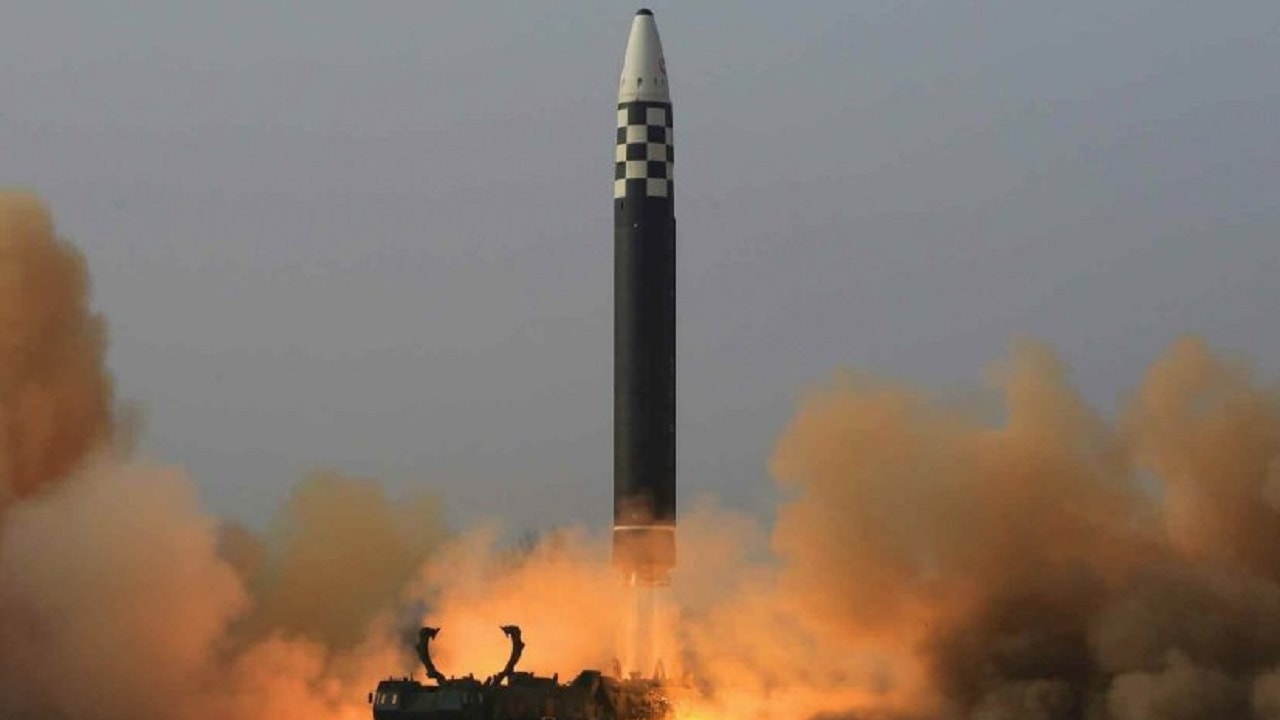North Korea and Iran: The Real Axis of Military Evil? The international community has turned its focus squarely on Russia since it invaded Ukraine in February. While Putin’s offensive war certainly deserves the condemnation it regularly receives, two other rogue nations have escalated their malign behavior in the meantime.
North Korea and Iran are critical threats to U.S. national security. Tehran has ramped up its missile development program and raw materials production, and it is rapidly approaching its nuclear breakout time. Meanwhile, Pyongyang has carried out an unprecedented number of missile launches over the last year, bringing the nation closer to possessing a functional nuclear-weapons delivery system.
Artillery, Advisers, and Missiles
Shared opposition to American hegemony has fermented the Iranian-North Korean military partnership for years. The two nations’ strategic cooperation began after the 1979 Iranian Revolution. Ostracized by the West, Pyongyang and Tehran turned to each other to acquire the means necessary for survival. Iran transferred oil to North Korea and received military expertise and equipment in exchange. During the eight-year-long Iran-Iraq War, North Korea became a primary weapons supplier to Iran, cementing its global position as a major legal arms exporter to the developing world.
North Korea delivered the M1978 long-range artillery gun to Tehran in the 1980s, and this weapon remains in Iran’s arsenal today. Pyongyang also supplied Soviet T-54/T-55 tanks, Chinese equipment, and ammunition to Iran’s military forces. By the second half of the Iran-Iraq War, North Korea was funneling still more Soviet and Chinese military equipment to Iran. Most notably, however, North Korea sent technical advisers to Iran, and these advisers helped bring out the country’s military potential. Conventional wisdom holds that approximately 300 North Korean military advisers worked in Tehran by the end of the 1980s.
And that’s not all. Perhaps North Korea’s most critical contribution to the Iranian military during the Iran-Iraq War was the delivery of 300-kilometer-range Scud-B missiles. This purchase triggered the two countries’ ballistic missile relationship. According to the Center for Strategic and International Studies, Pyongyang also agreed to aid Iran in developing the industrial infrastructure necessary to produce its own Scud-B variant.
Writes CSIS: “These variants imported from the DPRK – as well as those now assembled in Iran – were named the Shahab-1 (translation: “Meteor-1”). The Shahab-1 is nearly identical to the North Korean Scud B variant (Hwasong-5), although it likely incorporates materials more accessible to Iran.”
Iran reportedly first launched the Shahab-1 variant in the late 1980s and began manufacturing them indigenously by the mid-1990s.
North Korea-Iran, a Nuclear Team
During the 1990s, the partnership strengthened when Tehran purchased the Pyongyang-made, 500km-range Scud-C (Shahab-2) missile. In a 1993 report, the U.S. intelligence community cautioned that Iran, “one of North Korea’s best customers for ballistic missiles and related technology, is likely to be one of the first recipients of the 1,000 km Nodong. By the end of this decade [1990s], Iran could be able to assemble short-range (Scud B and Scud C) and medium-range No Dong ballistic missiles.”
According to reports, a 1994 meeting between North Korean Air Force Commander Gen. Cho Myong Rok and his Iranian counterpart culminated in the testing of the Nodong-2 missile in Tehran. In a 2008 report, the opposition group called the National Council of Resistance of Iran alleged that North Korean personnel were covertly working at a Defense Ministry site suspected of producing nuclear warhead technology. According to the Foreign Policy Research Institute, the Islamic Revolutionary Guard Corps “reportedly drew on North Korean expertise (and used an IRGC cutout, the “Shahid Rajaei” company), in order to construct a defense infrastructure that would protect and conceal its military nuclear program.” Iran’s Natanz and Isfahan nuclear sites are a product of this collaboration.
In addition to its ballistic missile arsenal, Iran’s submarine arsenal, which it largely obtained in the early 2000s, can be attributed in part to the DPRK. Iran’s Ghadir-class midget submarines are essentially a carbon copy of North Korea’s MS-29 Yono class vessels. Acquired to patrol shallow coastal waters, the Ghadir submarines can fire torpedoes, lay mines, and join anti-shipping operations. While none of Tehran’s submarines can launch ballistic or cruise missiles, the Iranian Navy without doubt intends to change that.
Since 2006, the international community has implemented sanctions on Pyongyang to no avail. Even as the Joint Comprehensive Plan of Action was in the works, the Washington Free Beacon reported that Pyongyang supplied missile components to Tehran. This move represented a clear violation of UN sanctions, but the Obama administration gave the rogue state a pass in order to not disrupt the deal’s prospects. This 2015 incident demonstrated how willing both North Korea and Iran are to circumvent international standards.
More recently, in 2020, North Korea and Iran resumed collaborative efforts to develop long-range missile capabilities, according to a UN report. The text of the annual report emphasized that cooperation includes the transfer of critical parts.
North Korea and Iran have both carried out various missile and rocket tests over the last few years. Just last week, Iran carried out a second test of its Zuljanah satellite rocket as nuclear negotiations reopened in Vienna. A few weeks earlier, North Korea launched eight short-range missiles in a similar escalation. Since the Iran-North Korea partnership has not faltered, the technological success of one state bodes well for the other.
Maya Carlin is a Middle East Defense Editor with 19FortyFive. She is also an analyst with the Center for Security Policy and a former Anna Sobol Levy Fellow at IDC Herzliya in Israel. She has by-lines in many publications, including The National Interest, Jerusalem Post, and Times of Israel.

